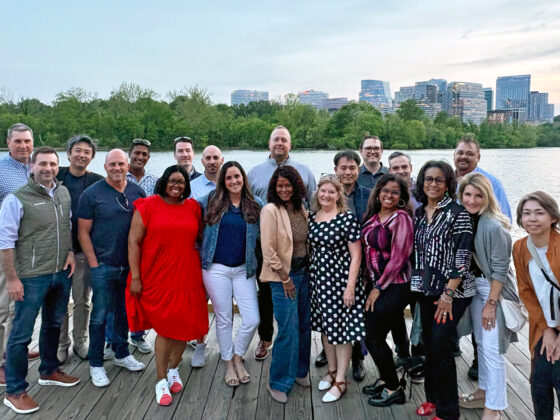During the 2nd Annual Innovation Summit: Growing and Enabling Innovators hosted by Darden Executive Education in the Washington, D.C., area on 16 May, over 60 leaders came together from various companies and industries, including U.S. military, banking/investing, healthcare, IT, nonprofit, etc. to hear from Professor Ed Hess, author of Humility is the New Smart and Learn or Die.
While many of the participants were facing specific challenges in trying to grow and innovate, there was a consensus that what has been successful for organizations in the past isn’t going to be sustainable in the future. “We need to look at new ways of doing things on a regular basis,” said participant Jen Sovada with the U.S. Air Force. “Oftentimes we get stuck in these paradigms where we are comfortable, but we’re not making any progress.”
According to Hess, over the next 15 years, advanced technology will replace a significant number of jobs currently done by humans. To remain competitive in the Smart Machine Age, organizations need to create value by leveraging the skills that technology does not posses: creativity, innovative thinking, critical thinking, and emotional and social intelligence – all crucial components for driving innovation. To make this change, though, leaders need to understand the type of environment that encourages innovation, the leadership and management models that will enable it, and the shift in mindset that will allow us to embrace it.
For the first session of the event, Hess shared insights from his current research on why being innovative is challenging and what personal and organizational changes are necessary to facilitate innovation. In our society, humans are programmed to strive for operational excellence and not make mistakes. Yet innovation relies on experimentation and failure. It is a mindset shift that individuals are not capable of making on their own because of cognitive and emotional inhibitors such as ego, fear and biases. It requires the right environment, processes and leadership. Characteristics of successful organizations in the Smart Machine Age include traits such as:
- An environment that fosters high employee engagement through positively, psychological safety and the ability to meet people’s self-determination needs
- A culture that leverages technology and data to promote candor, continual learning, permission to speak freely and freedom to fail
- Processes to prevent autopilot thinking and responses
- Leaders who are people-centric, collaborative and actively seeking input and ideas from others
With a solid basis for how to enable innovation, participants took part in a self-assessment workshop during the second session. When asked to reflect on themselves and their organizations to rate a variety of behaviors, participants began to see specific areas where they could transform their own behaviors and processes to help enable innovation within their own teams. According to Gopa Nair from Capital One, “I need to take this back and try it to see how it affects our team, and for me first. It needs to start with me.”

Overall, there was a high level of engagement with the group, and many people were open about their own specific challenges and questions. Hess took time after each session for individual follow-up discussion, and many left with new ideas and approaches to implement right away. Or even a few words of wisdom to remember in every day life, such as Austin Lee with the Advisory Board Company, “Get out of your head, get out of your ego and just listen.”





